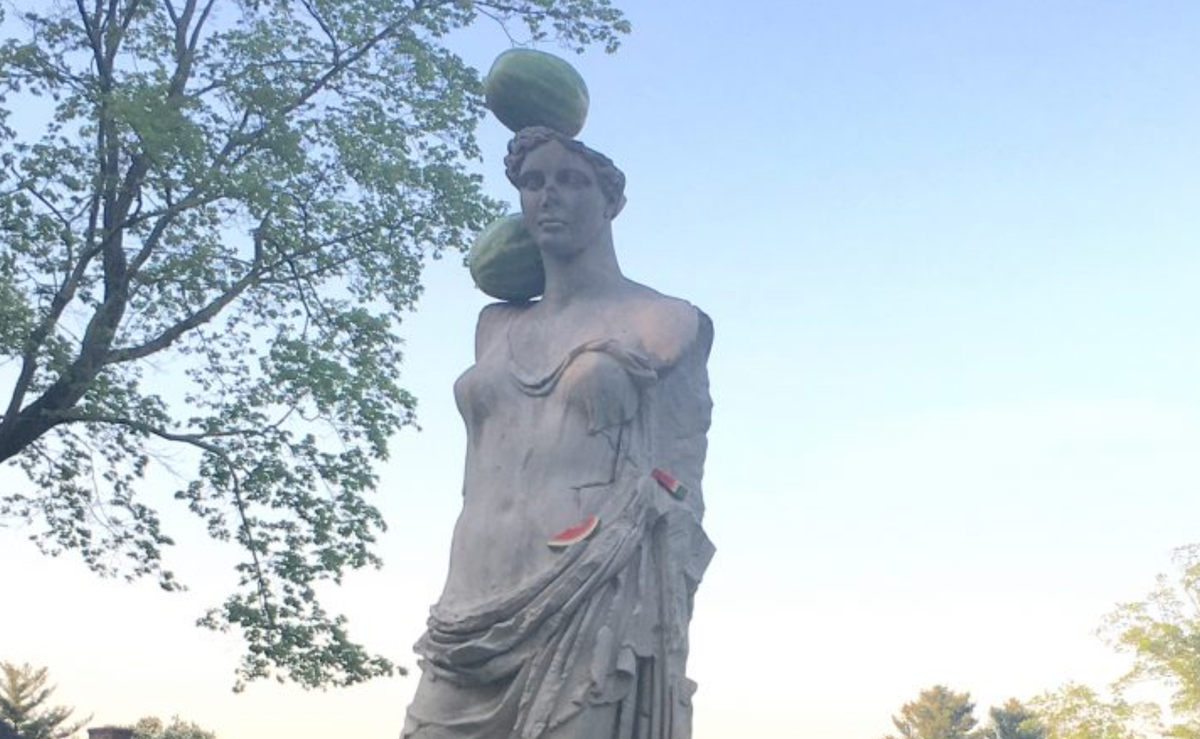About
On the front lawn of the Aldrich Contemporary Art Museum in Ridgefield, Connecticut, there is a statue of Hera, the Greek goddess of women and marriage, that appears to be vandalized by a sweet and refreshing fruit. Whole, halved, and quartered, this beautiful stone statue is covered in watermelons from head to toe—or so it appears.
If you come close enough to the sculpture, it will become apparent the watermelons on the statue of Hera are not actually real melons. They were intentionally put there by artist Toni Matelli, who specializes in defacing the sculptures of religious and cultural icons to make a statement. The watermelons are hand-painted and made of cast bronze. It makes for quite a surprise upon first glance.
Matelli’s intention with this piece is to challenge what we believe to be distasteful. Why is it uncouth for a stone sculpture to be covered in fruit? Better yet, Matelli asks us to consider the irony of pieces of a stone statue that appears to be decaying faster than the fruit that covers it.
The sculpture and its watermelons are part of the Aldrich Contemporary Art Museum’s Main Street sculpture series and will be on display until October 21, 2017.
Update: The statue was removed January of 2018.
Related Tags
Published
June 28, 2017



















